1994 Half Dollar Coin Value: How Much Is It Worth?
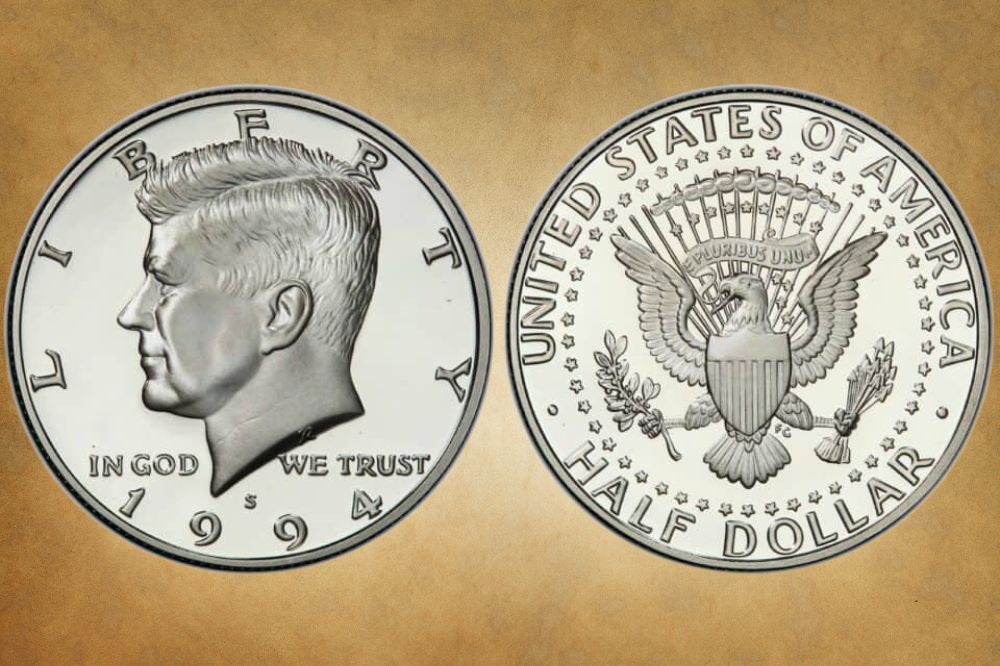
President John Fitzgerald Kennedy is one of the most popular presidents the United States of America has ever had.
Unsurprisingly, when the United States Mint produced a coin commemorating the slain president, there was a lot of interest in the new Kennedy half dollar.
The commemorative and historical significance make the 1994 half dollar quite valuable among collectors. Not only is this coin worth more than face value, but it also fetches hundreds of dollars if you know what to look for.
Read on to find out how much your 1994 half-dollar is worth. You will also learn about this coin’s interesting history, unique values, and errors that can significantly boost its value.
So, let’s get started!
1994 Half Dollar Value Chart |
||||
| Mint mark | Good | Fine | Extremely Fine | Uncirculated |
| 1994 No-mint mark Half Dollar Value | $0.75 | $0.75 | $0.75 | $2,450 |
| 1994 D Half Dollar Value | $0.75 | $0.75 | $0.75 | $225 |
| 1994 Proof Half Dollar Value | – | – | – | $506 |
1994 Half Dollar Value Guides
Let us now find out the real value of your 1994 half dollar. Three varieties of the half dollar were minted that year, and the value of each varies.
The three varieties include:
- The 1994 No-mintmark Half Dollar
- The 1994 D Half Dollar
- The 1994 S Half Dollar
Next, we’ll look at the value of each of the coin varieties.
1994 No-mint mark Half Dollar Value
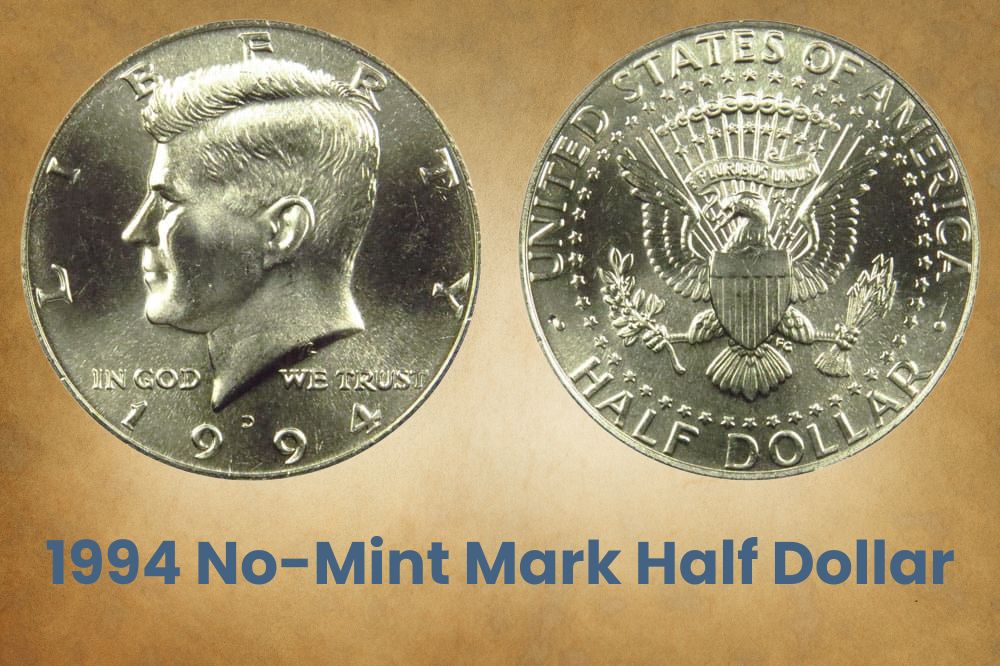
In 1994, the Philadelphia mint struck 23, 718,000 half dollars. This large mintage means that these coins are quite common, easy to find, and inexpensive in circulated condition.
Even in uncirculated condition, finding a 1994 P half dollar is fairly easy and inexpensive for grades up to mint state (MS) 66. Half dollars from 1994 graded MS68 and above are extremely scarce and can cost hundreds or thousands of dollars.
In circulated condition, the 1994 half dollar value is slightly more than its face value and will fetch about $0.75. In uncirculated, mint state, the coin is worth between $1 and $2,115, with the coin’s value increasing for gem examples or coins graded higher on the scale. The most expensive 1994 Kennedy dollar was graded MS68 and sold at auction for $2,450 in 2014.
Because this coin was minted in Philadelphia, it does not have a mintmark.
1994 D Half Dollar Value
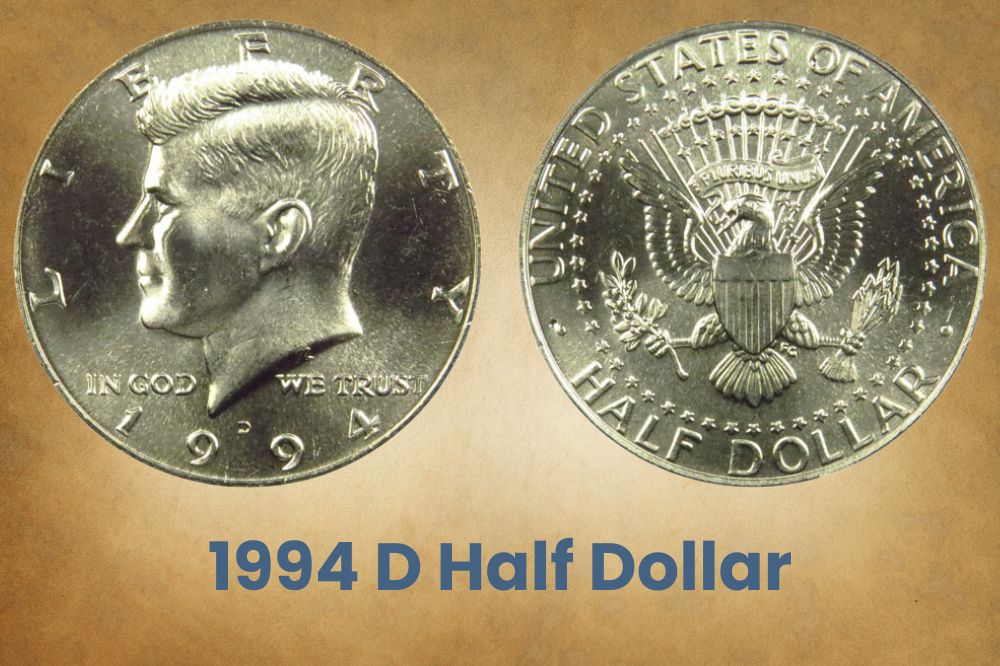
As the name suggests, the 1994 D half dollar was minted at the Denver facility, with 23,828,110 produced that year.
Owing to the large mintage, the 1994 half dollars from Denver are very common; many are still in circulation and can be obtained inexpensively.
These coins can be relatively difficult to find in higher uncirculated grades of MS61 to MS66. But there are enough of these coins, making them generally inexpensive.
In much higher grades of MS67 and above, it is extremely difficult to find a 1994 D half dollar. Any existing examples will cost thousands of dollars.
Circulated 1994 D half dollars are worth $0.75. Uncirculated ones are worth up to $225 but can sell for as high as $2,300, as was the case of the 1994 D half dollar graded MS68 and sold in an auction in 2018.
1994 Proof Half Dollar Value
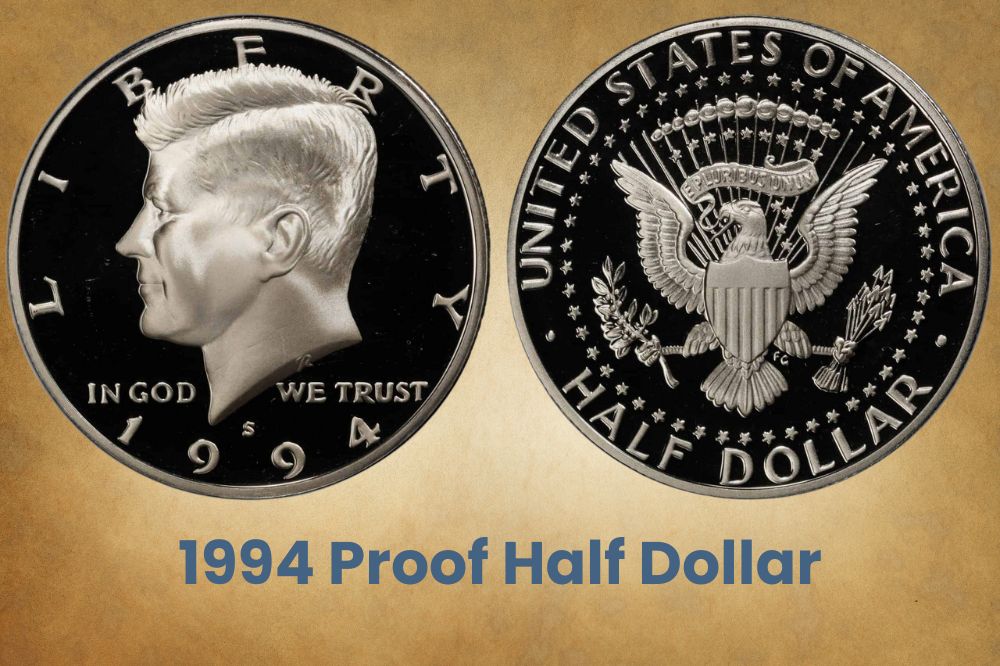
In 1994, the San Francisco mint struck a small number of silver proof half dollars. Remember, the regular strike half dollars from that year were made from copper and nickel, so the silver proof coins were special.
A total of 785,329 1994 proof half dollars were struck. Despite this low mintage, silver proofs from 1944 are fairly easy to find but fetch a premium because of the silver composition.
Deep cameo proofs graded PR 63 to PR68 are readily available and are generally inexpensive. But those graded PR70 are extremely scarce and will attract a premium.
Expect to part with between $18 and $70 for a 1994 proof half dollar, with $70 being the value of a grade PR70 coin. The most expensive 1994 proof Kennedy half dollar graded PR70 sold for $506 in 2003.
This coin has a mintmark S below the president’s truncated neck.
As you can see, the 1994 half dollar value is slightly more than the face value for circulated coins. The value can vary drastically in uncirculated half dollars from 1994, with the highest-graded coins fetching hundreds or even thousands of dollars.
Related Posts: 26 Most Valuable Half Dollar Coins In Circulation
1994 Half Dollar Errors
In this section, we’ll look at the various errors that occurred during the striking of 1994 Kennedy half dollars.
Errors may not always fetch a premium, but they are interesting occurrences and are attractive to collectors. Of course, some errors are worth a lot depending on the type, the mintage, and how visible or extreme the error is.
1994 Double Strike Half Dollar Error
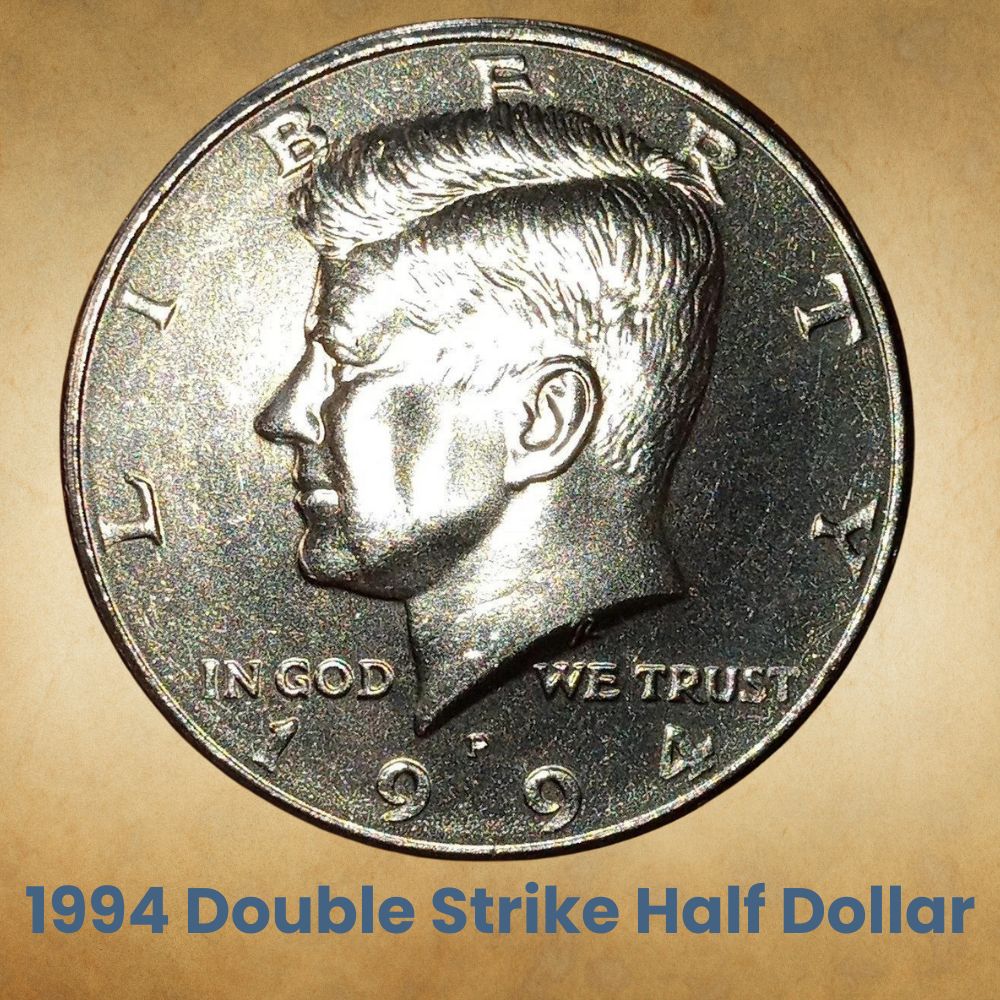
The double strike error is one of the most common. It happens when a coin is struck and does not come off the collar die. Therefore, the coin is struck again, so the second strike goes directly on top of the first strike or at a slightly different angle, causing a slight misalignment.
On some 1994 Kennedy half dollars, you will notice a significant doubling around the nose, ears, and chin. Such an error coin is worth between $0.90 and $3, depending on the extent of doubling.
1994 Clashed Die Half Dollar Error
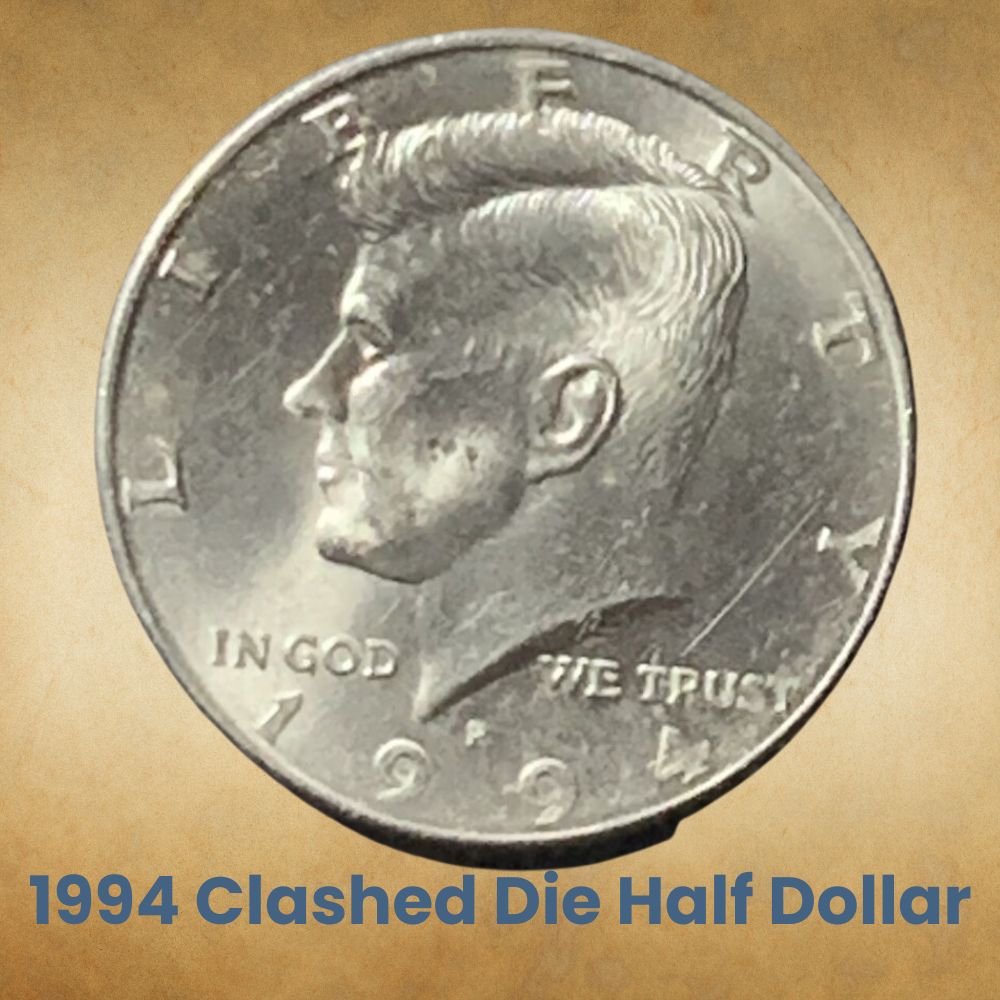
Clashed die errors are rare and happen when the obverse and reverse die collide when a planchet is not fed into the striking collar.
This error is rare because there is usually a minimum clearance between the obverse and reverse dies, ensuring they do not touch. But, if the mechanism holding the die collapses or falls out of adjustment, the two dies will surely touch.
When the obverse and reverse dies touch, they may transfer their designs onto the opposite side of the coin. So, the obverse will have its usual design and a slight imprint of the reverse design or vice versa.
Related Posts: 17 Most Valuable Kennedy Half Dollar Worth Money
History Of The 1994 Half Dollar
Following the assassination of John Fitzgerald Kennedy on November 22, 1963, the Director of the Mint, Eva Adams, proposed to Chief Engraver Gilroy Roberts the idea of commemorating him through the country’s currency.
Plans to design the coin were underway within days of the tragedy. Asked to choose a suitable coin to honor the President, First Lady Jacqueline Kennedy picked the half dollar, which at the time had the portrait of Benjamin De Roosevelt Franklin, the country’s founding father.
Congress approved the Kennedy half dollar, passing the official bill on December 30, 1963. The Denver and Philadelphia mints began striking the coins in February 1964.
Chief Engraver Gilroy Roberts and Assistant Engraver Frank Gasparro were responsible for designing the Kennedy half dollar. In 1961, they created their own John F Kennedy Presidential Series Medals and used these portraits to design the new half dollar coin, making a few modifications.
Roberts designed the obverse while Gasparro worked on the reverse, changing Franklin’s portrait and the Presidential Seal.
The assassination of the 35th president of the USA was shocking, given how much the public loved John Kennedy. So, when the Mint released the coin into circulation on March 24, 1964, it was not surprising that people opted to hoard instead of spend the coins. By the first day, the Mint had sold a whopping 70,000 coins, leaving all mints with no more coins.
In response to the shortage, the Mint struck more half dollars to increase the total to $160 million and had minted more than 400 million Kennedy dollars by the start of the 1990s.
The composition of the Kennedy dollar changed severally over the years. When the coin was first struck in 1964, it was made of 90% silver and 10% copper. But by 1965, there was a silver shortage; the prices shot up significantly, and the government’s stockpile of the precious metal had reduced.
In response to these circumstances, the Mint changed the composition of silver coins to 40% silver and 60% copper between 1965 and 1970. By 1971, all coins were made from copper and nickel, while silver was reserved for proof sets. The 1994 half dollar is a classic cupronickel coin.
Related Posts: 18 Most Valuable Franklin Half Dollars Worth Money
How to Identify the 1994 Half Dollar?
The 1994 half dollar retained the same design as the initial Kennedy dollar from 1964. In this section, we will look at the features of the 1994 Kennedy half dollar so you can know what to look for to determine if your coin is worth anything.
The Obverse of the 1994 Half Dollar
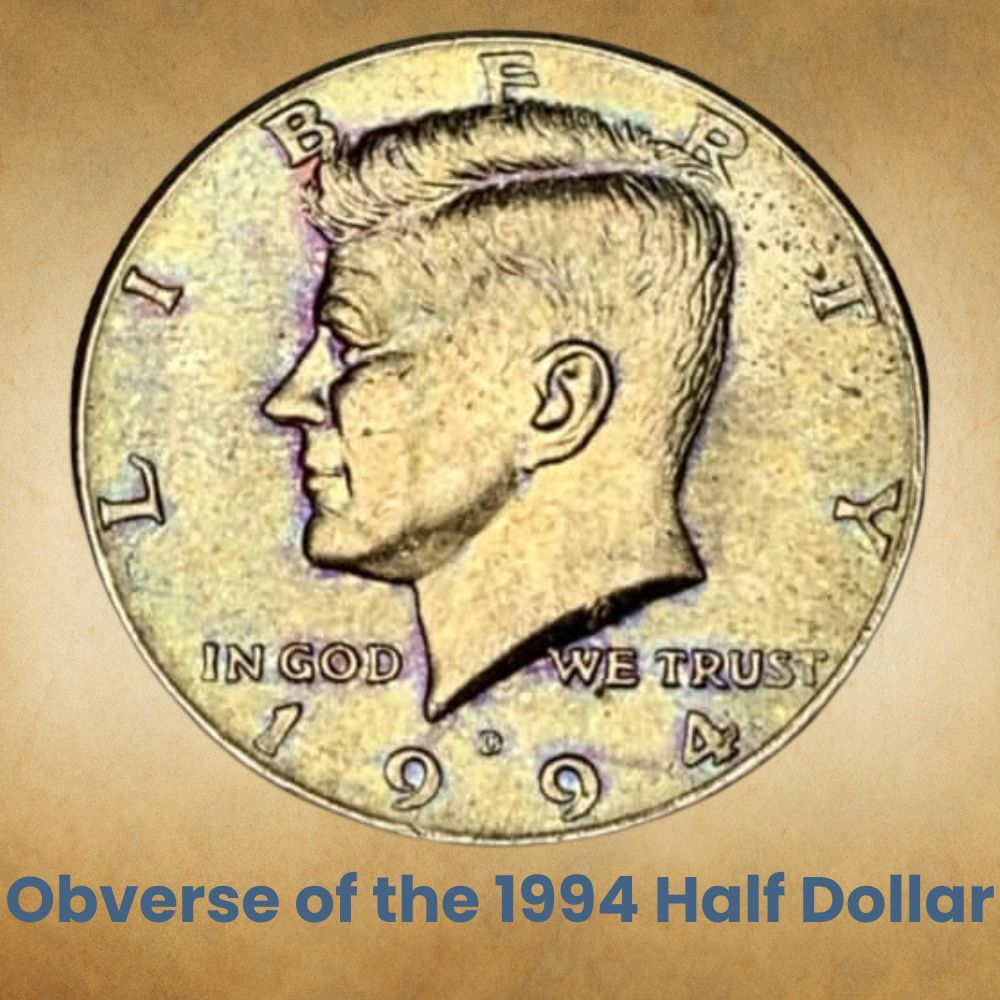
The obverse is the top-facing side of a coin. The 1994 half dollar features President John Fitzgerald Kennedy’s left-facing profile on the obverse. The president looks hopeful and shows a slight smile.
The word LIBERTY is inscribed around half of the coin’s upper half edge while the date, 1994, appears around the bottom edge.
The motto IN GOD WE TRUST appears horizontally toward the president’s truncated neck, with the truncation separating the motto into two parts, i.e., IN GOD appears on the left side, and WE TRUST on the right.
The Reverse of the 1994 Half Dollar
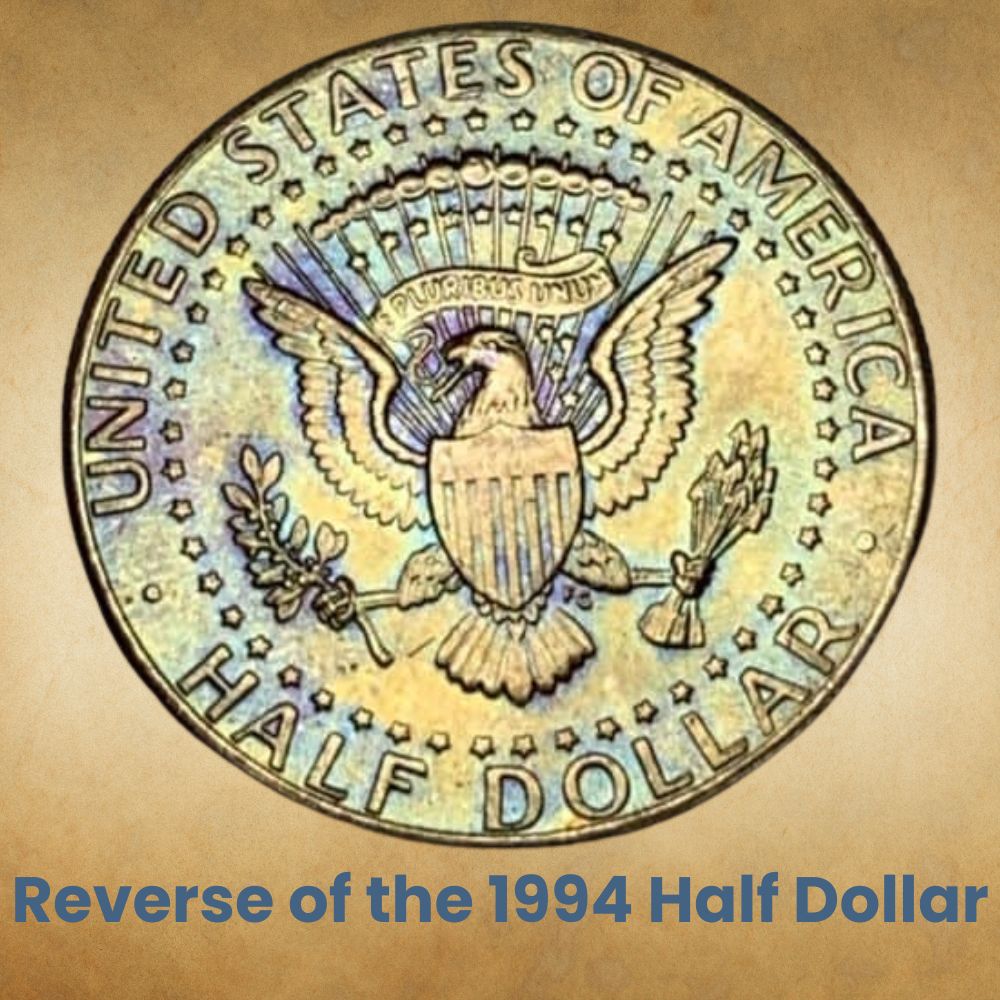
The reverse is the coin’s back side. The reverse design of the 1994 half dollar is similar to the presidential seal.
There is an eagle with spread-out wings. The bird holds a banner in its beak with the motto E PLURIBUS ENUM inscribed. The motto means Out of many, one.
The Union Shield is placed in front of the eagle, and a shiny glory light comes behind and above the bird. It features a glorious thirteen cloud puffs and thirteen mullets.
The eagle holds arrows in its right talon and an olive branch in its left. Finally, fifty stars representing the 50 states encircle the entire portrait.
Other Features Of The 1994 Half Dollar
Contrary to popular belief, the 1994 Kennedy half dollar is not made from silver. This coin consists of approximately 90% copper and 10% nickel.
The coin measures 30.6mm in diameter and 2.15mm in thickness and weighs 11.3g. It has a reeded edge.
Coins minted in Philadelphia do not have a mint mark, but the regular strikes from Denver and San Francisco have a mintmark on the coin’s obverse just below the truncated neck of the president’s portrait.
Is a 1994 Kennedy half dollar silver?
Yes and no. Contrary to popular belief, the regular strike 1994 Kennedy half dollar is not made from silver. Rather, it is composed of 90% copper and 10% nickel. That said, the 1994 proof half dollar is made from silver, as the US Mint reserved its dwindling silver stockpiles for making only proof coins. The silver half dollar proofs from 1994 in excellent condition and deep cameo contrasts can fetch more than $500.
Is a 1994 Kennedy half dollar worth anything?
In 1994, the mints produced millions of Kennedy half dollars, and most were released into circulation. As such, these coins are not rare. The high mintage and easy availability mean you can obtain the half dollar coin inexpensively. In circulated condition, the 1994 half dollar is worth more or less its face value but can fetch hundreds or thousands of dollars in uncirculated condition or rare higher grades.
Does a 1994 proof half dollar have a mint mark?
All 1994 proof Kennedy half dollars have the mintmark S on the obverse right underneath the president’s truncated neck. Another way to identify proof coins is their superior luster, sharp design outlines, frosted lines, and absence of blemishes or errors. Before 1968 proof coins did not have mintmarks, but this changed when proof coin production moved from Philadelphia to San Francisco.
